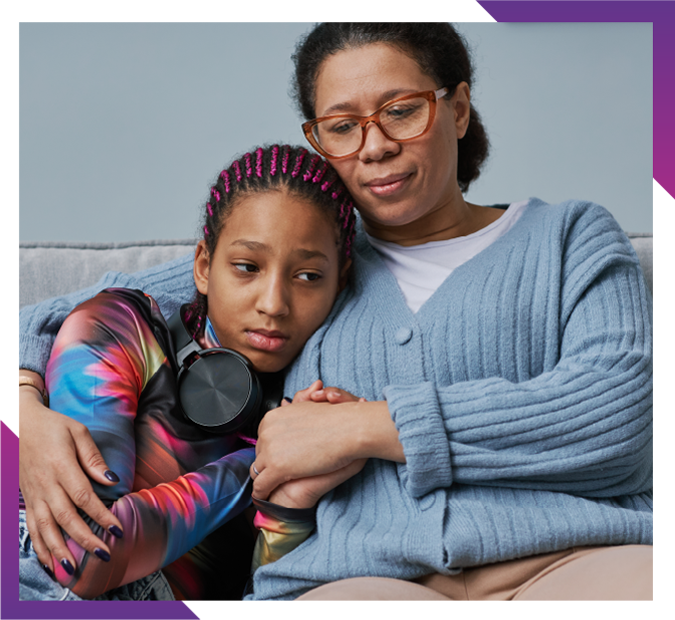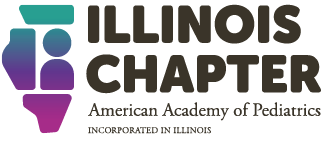Youth Suicide Prevention
Pediatric Health Clinicians & Other Adults Who Work with Youth Can Make a Difference
Explore resources and information to help decrease pediatric suicide and effectively work with families and communities on this rising issue.
Why Suicide Screenings, Assessments, & Referrals Matter
34%
of youths >14 years had contact with a healthcare provider in the week before their death.
38%
of adolescents had contact with a healthcare system within the 4 weeks before their death.
49%
of youth had visited an emergency department (ED) within the year before their death.
80%
of adolescents visited a healthcare provider within the year before their death.

It is safe to ask youth if they are thinking about suicide!
According to the AAP, it is a common myth that asking will “put the idea into their heads.”

Illinois Children & Teens Are At Risk

Suicide rates are increasing, especially among children aged 10 to 14 years old

In Illinois, 8.4% of high school students attempted suicide
Illinois Youth Risk Behavior Survey (YRBS), 2021
Risk and Protective Factors for Suicide in Young Children & Teens
Suicide Risk Factors
Suicide is generally caused by multiple factors or events. Some of these factors are individual or due to relationships and others are due to community or societal factors. Risk factors include:
Suicide Protective Factors
Just like with suicide risk factors, protective factors are due to individual, relationship, community, or societal factors. Suicide protective factors include:
Know The Warning Signs & Save a Life
Common warning signs for increased risk of suicide & suicide ideation include:
- Talk about killing oneself
- Talk about feeling like a burden
- Talk about feeling hopeless
- Talk about having no reason to live
- Talk about feeling trapped
- Talk about unbearable pain
- Changes in mood
- Increased anger or rage
- Depression
- Anxiety
- Agitation
- Increased substance use
- Withdrawal from activities
- Isolating from family and friends
- Sleeping too much or too little
- Giving away possessions
- Making suicide plans
- Trying to gain access to lethal means

Suicide and Suicidal Ideation Screening Tools for Pediatric Health Clinicians
Use these evidence-based, validated, and publicly available* screening tools to help identify youth at risk of suicide.
AAP Clinical Report: Suicide and Suicide Risk in Adolescents
Suicide risk in adolescents: Updated report guides pediatricians through screening, intervention
Ask Suicide-Screening Questions (ASQ)*
Suicide Behavior Questionnaire-Revised (SBQ-R)*
Columbia Suicide Severity Rating Scale (C-SSRS) – Triage Version
Patient Health Questionnaire – 9 Adolescent Version (PHQ-9A)
Evidence-Based & Publicly Available Assessment Tools
Use these assessment tools after a patient has a positive screening. Some tools have trainings available online (see ASQ BSSA and C-SSRS). See NIMH ASQ toolkit for more details on administering the brief suicide safety assessment.
Important Note: If a patient has a positive screen and shows they are at imminent risk for suicide, they do NOT need a brief suicide safety assessment. They need an EMERGENT Full Mental Health and Safety Evaluation. The brief suicide safety assessment is a triage tool for patients who screen positive (non-acute/non-imminent) to determine the next steps.
Strategies for Clinical Settings
Youth Suicide Prevention: Strategies for Clinical Settings (full PDF version)
After Assessment – Determine the Next Steps:
Patients at Imminent Risk need an Emergent Mental Health Evaluation
Caring for Patients and Imminent Risk of Suicide
Patients not at imminent risk, require further evaluation.
Caring for Patients Who Need Further Medical Mental Health Evaluation
Patients at low risk, should be given resources and a mental health referral.
Caring for Patients at Low Risk of Suicide
What to Do When Community Resources are Lacking:
- Consider telehealth services
- School-based behavioral health services
- Follow-up appointments with the pediatrician until mental health services can be arranged
- Safety planning and lethal means safety counseling
- Pediatric health clinicians can consider working with Pediatric Mental Health Care Access Programs (PMHCA) also called Child Psychiatry Access Programs (CPAP). These are collaborative programs that provide training and support to primary care providers related to addressing mental health conditions in practice.
In Illinois, this program is Illinois DocAssist
Additional Resources for Suicide Screening, Assessment, & Referrals

The American Academy of Pediatrics Blueprint for Youth Suicide Prevention
The AAP has put together a Blueprint for Youth Suicide Prevention, which is designed to support pediatric health clinicians in advancing equitable youth suicide prevention strategies in all settings where youth live, learn, work, and spend time. It was created following the 2021 AAP and American Academy of Child and Adolescent Psychiatrists and Children’s Hospital Association's joint declaration of a national emergency in child and adolescent mental health.
The Blueprint includes: Strategies for Clinical Settings for Youth Suicide Prevention as well as information about addressing disparities and systemic inequities in youth suicide and mental health.
Universal Suicide Risk Screening
Helps Support Equity in Suicide Prevention Efforts!

Source: NIMH ASQ Toolkit

Use Your Social Platforms for Suicide Prevention Week
Every year, Suicide Prevention Week is in September. We encourage all health care providers who work with children and teens to share social media graphics that include important facts, statistics, and what to do if children and teens are experiencing thoughts of suicide. Together, we can help spread awareness and protect our youth.
Download Social Graphics